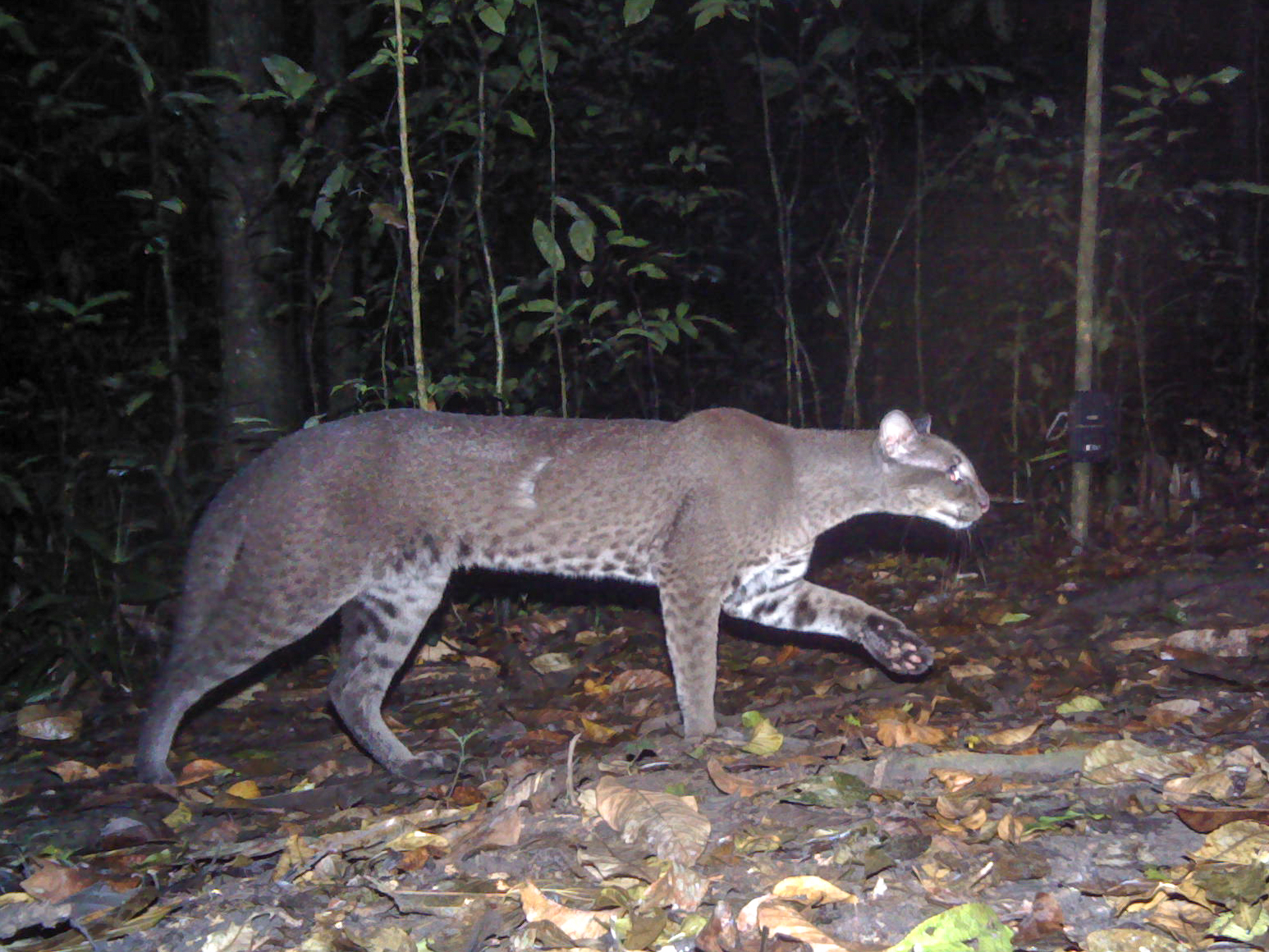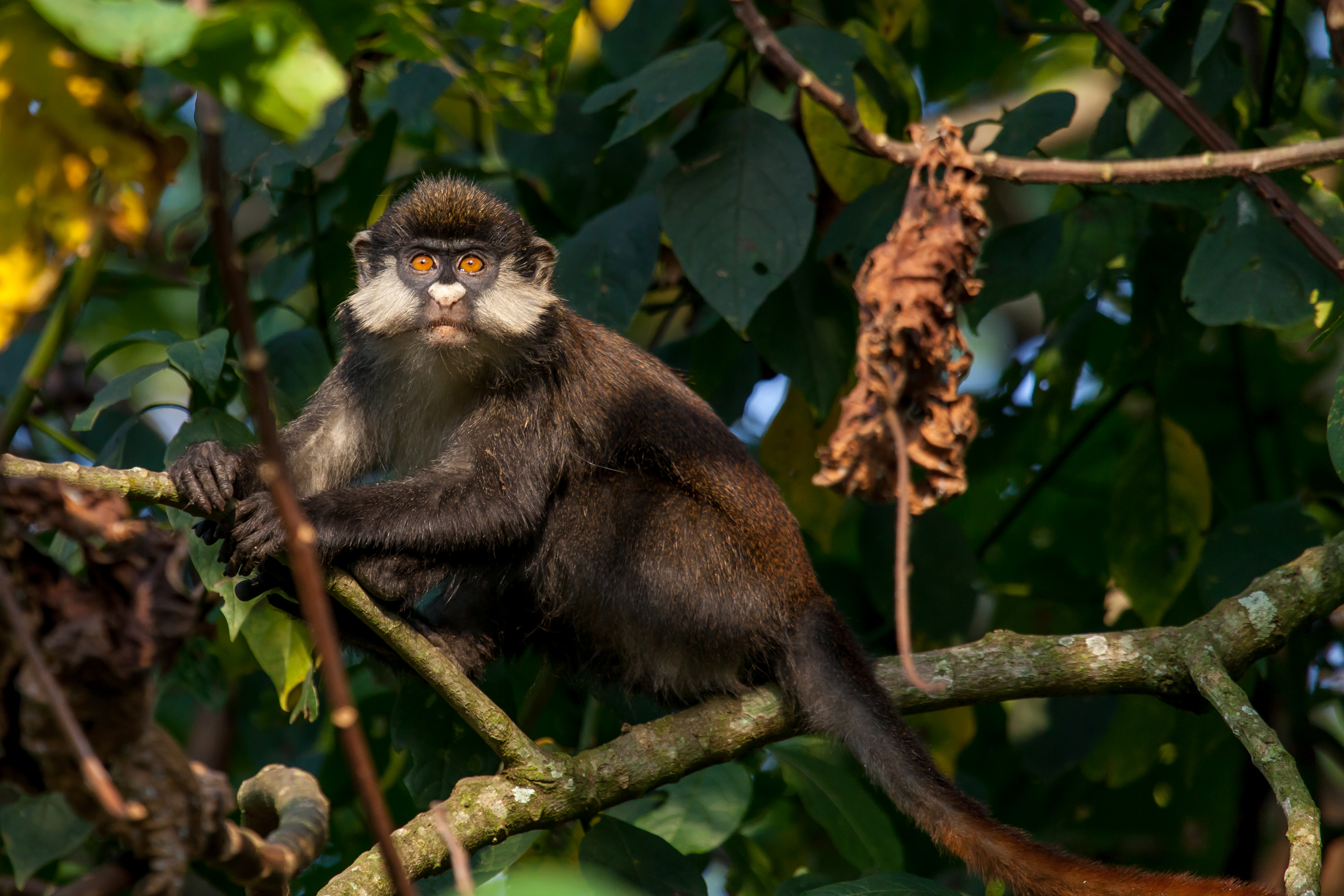Tigri, Parc Assango, Gabon
All photographs © David Mills
All camera trap images © David Mills / Panthera / WCS
Ghost of the Forest
When I first moved to Uganda in 2010, African golden cats were still the least known wild cat in Africa. In fact, few people had even heard of them. This led Panthera to fund two partner projects to collect the first baseline information on their ecology and conservation needs. Armed with film camera traps, I headed to the Makerere University Biological Field Station in Kibale National Park, Uganda, to see what we could learn.
African golden cats are spectacularly elusive. One of the Ugandan chimpanzee field assistants who had gone into the forest 5 days a week from pre dawn to post dusk for 20 years had seen them twice. When we started, we thought they might live at low densities. Nevertheless, before starting the project, we had some information from previous studies. First of all, not all golden cats are “gold.” About half of them are grey and a very small percentage are melanistic. We also knew that their closest relatives, caracals and servals, prefer open habitats or woodland and do not typically enter closed tropical forest. The high rainforest of the Congo Basin is the domain if the African golden cat.
Grey phase
Red phase
Red mother with grey kitten (look carefully)
Melanistic phase
Camera Traps!
While we captured quite a few photos in the first couple of years, data collection really took off when I was given 60 digital Panthera camera traps. My assistant, Sam Isoke, and I did 9 surveys in 4 years, mostly in Kibale, and photographed golden cats over 343 times. We counted 18 individuals in our survey area of just over 35 square km. In fact, despite rare sightings, we found that they live at higher densities in Kibale than in the forests of Gabon (this data has yet to be published). They are the epitome of elusiveness, going about their lives and simply melting into the jungle undergrowth when a human approaches.
Cologne anyone?
The use of baits and lures with camera traps is controversial. In many situations, it introduces unnecessary bias and should be avoided. We tested an attractant complex using fruit (for palm civets), meat, and… Calvin Klein Obsession for Men. Yes, cats like cologne. In fact many species like this particular cologne, probably due to synthetic civetone (a compound produced by African civets and used when they mark their territory) and synthetic vanilla. While this increased our detections of African palm civets, it did not statistically increase detections of golden cats, so we probably won’t use it with them again. Some individual cats did seem to like it though, like the one below that overmarked our CKO infused stick.
The Menu
While we did not explicitly investigate scats (poop) to see what golden cats ate in Kibale, several studies, including the one in Gabon, found that they eat mainly rodents and blue duikers. However, a photo we captured in the Kanyanchu area suggests that they may be after more challenging tree-dwelling monkeys in Kibale. In the Ngogo area, Sam Angedakin captured video (below) of a particularly ambitious cat ambushing a group of red colobus monkeys.
Blue duiker (Philantomba monticola)
A mother golden cat (we have pictures with her kitten) has caught an arboreal red-tailed monkey for dinner.
Red-tailed monkey (Cercopithecus ascanius) - They’re super cute. This onelooks angrier than they normally do. Maybe African golden cats are ruining his life.
Red colobus monkey (Procolobus rufomitratus) - Research individuals from the MUBFS field station. Don’t let the collar fool you. I’ve seen these badass monkeys successfully stand up to large troops of baboons. It’s crazy for a cat to try hunting one of these. That’s probably why the one in the video below bailed mid-tumble.
The Future
Camera traps are still opening up the secrets of Africa’s tropical forests. We still so much to discover about this amazing and elusive species. The entire periphery of their range is a mystery. We don’t know what their tolerance thresholds are for deforestation or overhunting. This is complicated by the fact that many of the areas on the boundary of the Afrotropical forest belt are mired in violent conflicts. There’s still a lot of work to do before we can be certain that our current management plans are sufficient to maintain stable populations and genetic diversity.
Acknowledgements
This study was funded by Panthera through the Kaplan Graduate Award and Small Cat Action Fund, and through WCS Uganda, who also provided my motorcycle and amazing logistical support.
The Uganda Wildlife Authority graciously granted us permission to work in this beautiful forest. They provided us with logistical support and rangers for protection when we needed them. UWA Research & Monitoring officers are doing a great job studying and protecting Uganda’s wildlife and wild places.









